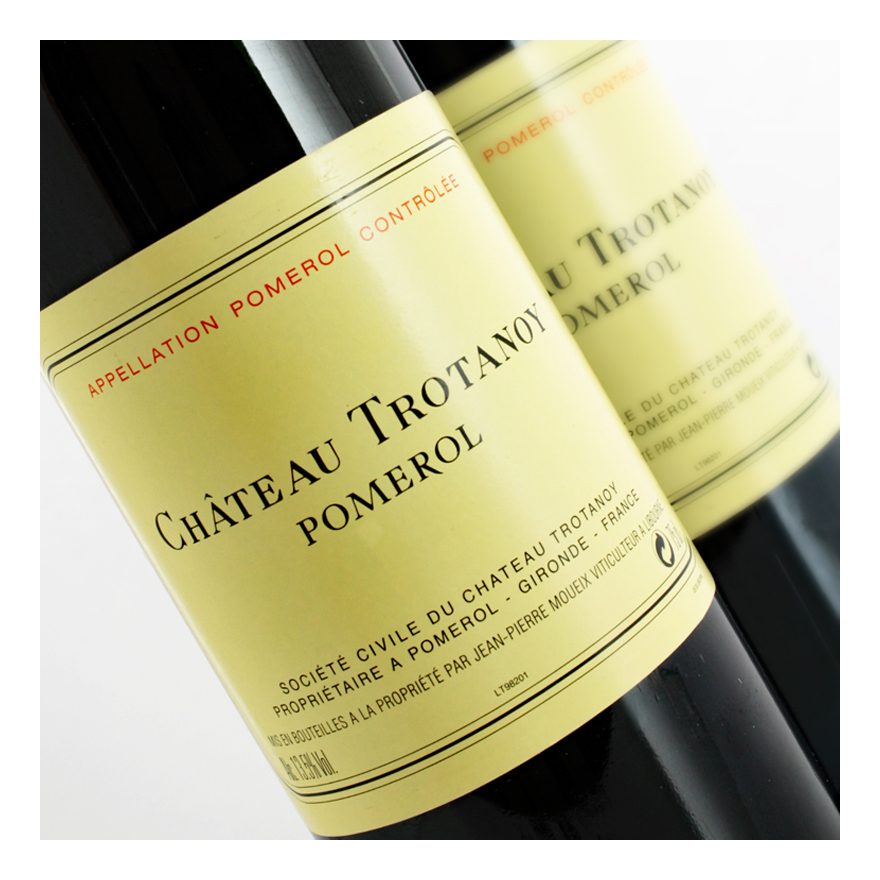My Bordeaux island wines from each side of the Gironde are Chateau Latour and Chateau Trotanoy. The later is managed by the Moueix family, one of the most influential names in Bordeaux. They, own several iconic properties in Pomerol, including Château Trotanoy, Château Lafleur-Pétrus, and Château Hosanna. These estates in heart of the Right Bank, produce some of the most sought-after Merlot-based wines in the world, each with a distinct identity. Christian Moueix has been managing these Chateau and until 2008 also Pétrus itself. Furthermore in Napa Dominus is part of the portfolio.
Edouard Moueix, son of Christian Moueix, visited Singapore in November 2015 and hosted a great dinner at Les Amies. He explained the differences between their Pomerol estates and also elaborated how the insights from the warmer climate of Napa where they produce Dominus has helped heir work in Pomerol. Here the summary of the three Pomerol estates.
- Château Trotanoy: Owned by the family since 1953, Trotanoy is always the most structured wine. Profound and age-worthy, balances power with refinement. The vineyard, situated on a mix of clay and gravel soils, produces an intense wine with dark fruit, truffle, and earthy notes. Often described as masculine and brooding, Edouard mentioned, that because of these traits there is special attention on the tannin management in Trotanoy whereas in Hosanna it is avoidance of over-ripeness..
- Château Lafleur-Pétrus: Acquired by Jean-Pierre Moueix in 1950, this estate lies between Château Lafleur and Château Pétrus, drawing its name from this prime location. Lafleur-Pétrus offers a more approachable, elegant expression compared to Trotanoy, with supple tannins, fresh red fruit, and floral notes. Its charm lies in its finesse and harmony, making it an alluring wine even in its youth.
- Château Hosanna: This wine was added to the family portfolio in 1999, by renaming the historic Château Certan-Giraud. Hosanna is celebrated for its flamboyance and polished style, blending opulence with precision. With a terroir rich in blue clay and gravel, the wines of Hosanna often exhibit exotic spice, mocha, and velvety tannins, delivering a modern yet sophisticated interpretation of Pomerol.
Tasting Notes
2010 Château Trotanoy 97 Points
Medium-dark purple. Reserved nose of pine tree, eucalyptus, earth, very tight. Could be Californian from the nose. On the palate the softness of the Merlot comes through but very tightly woven. Closed, with some bitter chocolate notes. Lots of depth and blue fruit. This will be very impressive. Completely different than the more open 09. Wait till 2025 and you will be in for something special. 97-100
2009 Château Trotanoy 96 Points
Medium-dark purple. Much more open than the 2010 and with similar aroma around dark fruit, eucalyptus and earth. There is an aristocratic reservedness here as in all Trotanoys that also includes the subtle bitterness that buffers the fruit on the palate. Finest Merlot tannins here. Very good length. Wonderful.
1998 Château Trotanoy 95 Points
Medium-dark garnet. Nose of dark fruit with some additional secondary, animalic notes compared to the young vintages. Remains reserved but in a nice way. This wine is not ostentatious but impresses with great depth and length. Not for the modernist.
2000 Château Trotanoy 99 Points
Medium-dark purple. I had this wine a few times and it was always closed and left me disappointed. As all wines were double decanted 2h before the event I saw the first ready showing of this vintage and wow! TN: Expressive nose of dark fruit, intermixed with earth and forest aromas, pine and a meaty touch. Very deep and complex. Excellent palate with, finally, melted tannins making for an outer worldly Merlot experience. Proves two points. 1) Trotanoy really needs 15 and not 10 years to come around 2) Trotoanoy is is one of the best, if not the best Pomerol, up there with Petrus, Le Pin and Lafleur. 98-100
2005 Château Trotanoy 96 Points
Medium-dark purple. The surprise of the evening was this wine. I would have never expected this to be anywhere near drinkability. Nose of more red than black fruit compared to other vintages intermixed with earthy notes. On the palate very soft and drinkable. Excellent persistency and length.
Author: Christian Raubach, WSET III, FWS, WSG Champagne Master
November 2014

